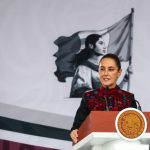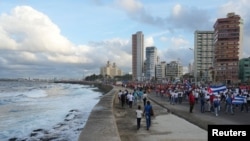First modification:
This May 17 marks the tenth anniversary of the death of Jorge Rafael Videla, an Argentine soldier who came to power through a coup in 1976 and who for five years commanded a bloody dictatorship that produced tens of thousands of tortures and many of the 30,000 disappearances reported during the Argentine dictatorship.
This May 17 marks the tenth anniversary of the death of one of the darkest figures in Latin American politics: the Argentine dictator Jorge Rafael Videla. This soldier ruled his country de facto between 1976 and 1981 thanks to a coup against Argentine democracy, a period in which it is estimated that most of the thousands of tortures and 30,000 disappearances that occurred during the military dictatorship occurred.
Videla’s seizure of power took place on March 24, 1976, at a moment of special upheaval in Argentine politics. By then, it had been less than two years since Juan Domingo Perón had died and his wife, María Estela Martínez, known as ‘Isabelita’, was the one in charge. A figure that was disliked among the military staff and who, under the excuse of restoring order, was dismissed from office.
With the beginning of his term, systematic repression began under the pretext of reestablishing ‘social peace’. Its objective was the communist guerrillas established in the north of the country, however, the persecution extended to leftist militants, Peronists and even people far from politics who had the misfortune of appearing on a target list by mistake.
The most widely used method was arbitrary detention and subsequent torture in military centers. These vexations tried to be hidden by the regime, but after the fall of the dictatorship in 1983, it was shown that they were not isolated cases and that, as we can see on this map, torture detention centers were distributed throughout the national territory.

These methods took the pain and suffering of the human being to the extreme, but after them, many of the tortured people were murdered by the dictatorship. These deaths occurred under the greatest secrecy. After being tortured, some of these people were sedated and thrown from a plane into the Río de la Plata.
It is estimated that, in total, there are 30,000 people disappeared for this reason. Shocking figures that made, during the dictatorship, thousands of women decide to demonstrate peacefully in Buenos Aires to demand answers about the whereabouts of their children. They were known as the mothers of the Plaza de Mayo and became a symbol of resistance. The attitude of the regime, however, was successful by its actions.
“Ending prevailing corruption, reestablishing an active presence abroad, boosting our economy and restoring social discipline were priority objectives of the basic reorganization that the country longed for. Today we can say that these objectives are being achieved thanks to the joint effort of all those that they interpreted the call made by the armed forces in a patriotic sense”.

But those goals were never met. The economy during the dictatorship in Argentina suffered significantly and was the cause of instability within the military establishment itself. In addition, Videla almost led Argentina to war against the Chilean dictatorship of Augusto Pinochet over the lost dispute over several islands in the Beagle Channel in Patagonia. A confrontation that could only be avoided by Pope John Paul II, but that would raise tensions with the neighboring country.
The truth is that this type of expansionist aspirations were the way to find some popular support around a kind of patriotic and nationalist cohesion, but in the long run, they would end up costing the dictatorship dearly. After Videla, Viola and Galtieri came to power, until the Malvinas war against the United Kingdom in 1982. An unmitigated disaster that would end the military leadership and bring democracy back.
This democratic restitution brought consequences for some leaders of the dictatorship’s senior staff. Like Massera, Viola and, especially, for Jorge Rafael Videla, who was considered the leader of the 1976 insurrection and promoter of the murders of opponents. The dictator received a life sentence in the 1985 trials. However, Videla would spend only five years in prison due to the insults promulgated by former president Carlos Menem in 1990.

From that moment on, the former dictator went through a period in which he was in prison several times for short periods and was sentenced to house arrest. However, the rise to power of Kirchnerism and the extradition requests from Germany for the murder of two of its citizens surrounded the former dictator in his last years.
The pardons that Menem received in the government were annulled and he returned to prison in 2008 for crimes against humanity and multiple accusations of murder and State terrorism, something that earned him life imprisonment. Jorge Rafael Videla died in the Marcos de Paz Prison on May 17, 2013 at the age of 87, without asking the victims for forgiveness or repenting, in fact, he considered all his actions “necessary”.





![[Img #74676]](https://thelatestnews.world/wp-content/uploads/2024/12/Laser-artificial-neuron-150x150.jpg)








